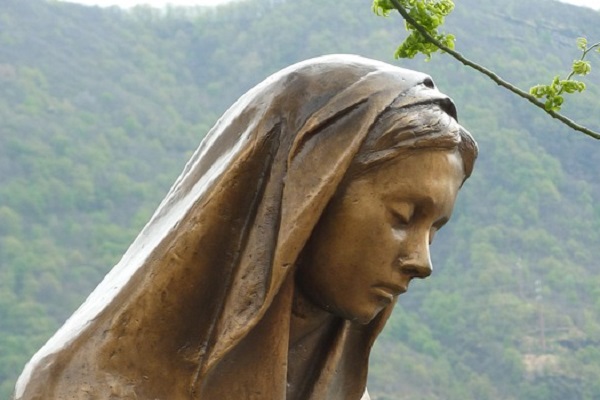
The Vatican has a special investigative team to research such phenomena
News about weeping statues of the Virgin Mary is common throughout the world. Such claims were made from time immemorial. The best-known example is a statue in Sicily. Known as Madonna of Syracuse, this inanimate piece has cried since 1953. News of tears falling down Mother Mary's eyes was reported from Macedonia, Hungary, and Argentina.
Investigating the Phenomena of the Weeping Virgin Mary[/tweetthis]
The same event happened in the United States as well. An inanimate Mother Mary statue in the town of Hobbs in New Mexico began to weep. The tears, on analysis, were found to be balsam and olive oil. This is incidentally the same formula used by the Catholic Church for a few specific rituals after being blessed by any bishop. To a lay observer, a weeping God would be a baffling one. To understand why the pious flock towards weeping Virgin Mary statues, it is important to know the connection between the Virgin Mary and the miracles.
As per Catholics, Mary gave birth to Jesus Christ, and thus the Virgin Mary gave birth to God. Such an exalted position enables Mary to have supernatural powers. Credit was given to her for multiple miracles, including the preservation of "The Veil of the Virgin," a Mary relic after the holding church, the Chartres Cathedral in France burned down. The three priests who helped save the relic got out unscathed from the flames and the heat.
The Virgin Mary is also credited with the victory of the outnumbered but efficient combined military forces of Venice, Genoa, and papacy over the Ottomans in the 1571 Battle of Lepanto. Devout Catholics believe Mary's tears to have special significance. She cries for both the worldly sins and over the searing pain which she endured when she was a mother living her life on earth. The latter is known as "seven sorrows of Mary." The list of seven sorrows includes Jesus' crucifixion and death. The scent of balsam and olive oil evokes the Virgin Mary as she is known as a "rose without thorns." It is to be noted that of Mother Mary's statue weeps; the Catholic church will ask the local bishop to conduct an investigation.
Investigating priests are guided by “Congregation for the Doctrine of the Faith,” a rule book overseeing Catholic doctrine. These apply not only to weeping Marys' but also to other supernatural apparitions. The priests find out whether such apparitions are real or a trickery.
In some cases, statues found to be weeping blood had the blood tested and it turned out to be blood from the statue’s owner. It was also found oil mixtures can be injected into the statue’s porous material and as the temperature of the room rises, the oil will begin to seep out, giving the appearance of tears. As for the bronze statue in New Mexico, the source of its tears has not yet been determined.
